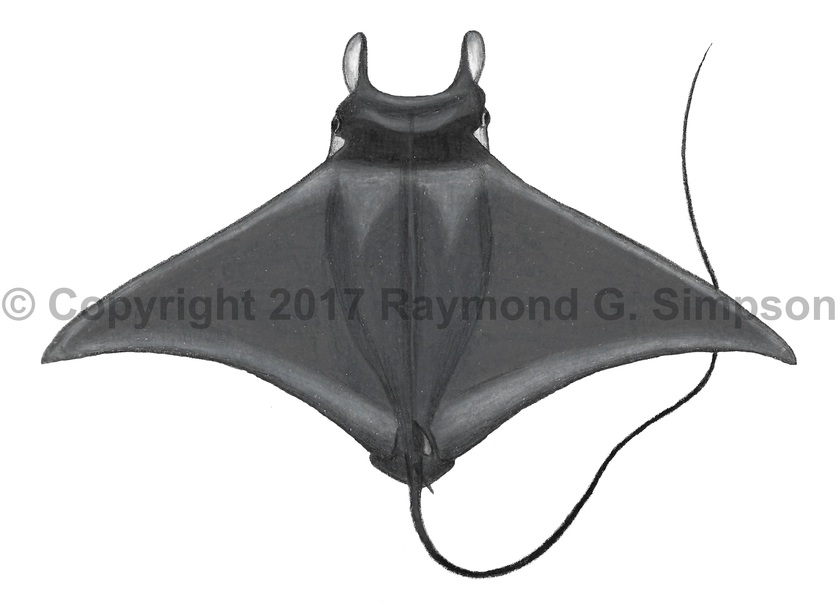
Common Name
Spinetail Mobula
Year Described
Müller & Henle, 1841
Identification
Disk huge and broad (wider than long). Head relatively moderate, protruding and wide with a subterminal mouth. Teeth present on both jaws. Tooth bands about 75% of mouth width. Cephalic lobes prominent but relatively small (compared to the mantas). Trunk thick with well developed ventral gill slits. Eyes on side of head. Spiracles on dorsal part of head. Pectoral fins angular with pointed tips. Anterior disk margin straight or convex. Posterior disk margin strongly concave. Tail long. Tail spine present and well developed. Dorsal fin single and tall. Pelvic fins small. Skin with dense denticles.
Color
Dorsum dark gray to blue-black, usually with a blackish C-shaped "collar" on the neck and whitish-gray around the disk margin. A black "mask" around eye and a white patch behind the eye. Ventrum white sometimes with a few gray patches. Cephalic lobes white with black margins and a black spot at tip. Dorsal fin with white tip. Juveniles most contrasting while adults are darker.
Size
Huge: maximum size to over 5m. Adults mature between 2-2.4m in width with females averaging larger than males. Newborns are at least 90cm in width.
Habitat
Pelagic in both offshore and inshore waters.
Range
Poorly known in the western Atlantic but definitely found off the coast of Brazil from the northeast to southeast coasts, including offshore islands.
References
Gadig, O.B.F. & C.L.S. Sampaio. 2002. Ocorrência de Mobula japanica no Atlântico Ocidental e Mobula tarapacana em águas brasileiras, com comentários sobre a diversidade de raias-manta (Chondrichthyes: Mobulidae) no Brasil. Arquivo de Ciências do Mar. Fortaleza, v. 35. n. 1-2, p.33-37. 2002.
Last, P.R., White, W.T., Carvalho, M.R. de, Séret, B., Stehmann, M.F.W & Naylor, G.J.P (Eds.). 2016. Rays of the World. CSIRO Publishing, Melbourne. 790p.
Other Notes
Mobula mobular has been used for Atlantic and/or Mediterranean populations of spined mobulas, but research has shown that M. japanica is the same species and so is found worldwide. A huge ray but usually smaller than mantas and easy to distinguish using the head and cephalic lobe size in relation to the body. It is the only species with a well developed tail spine.